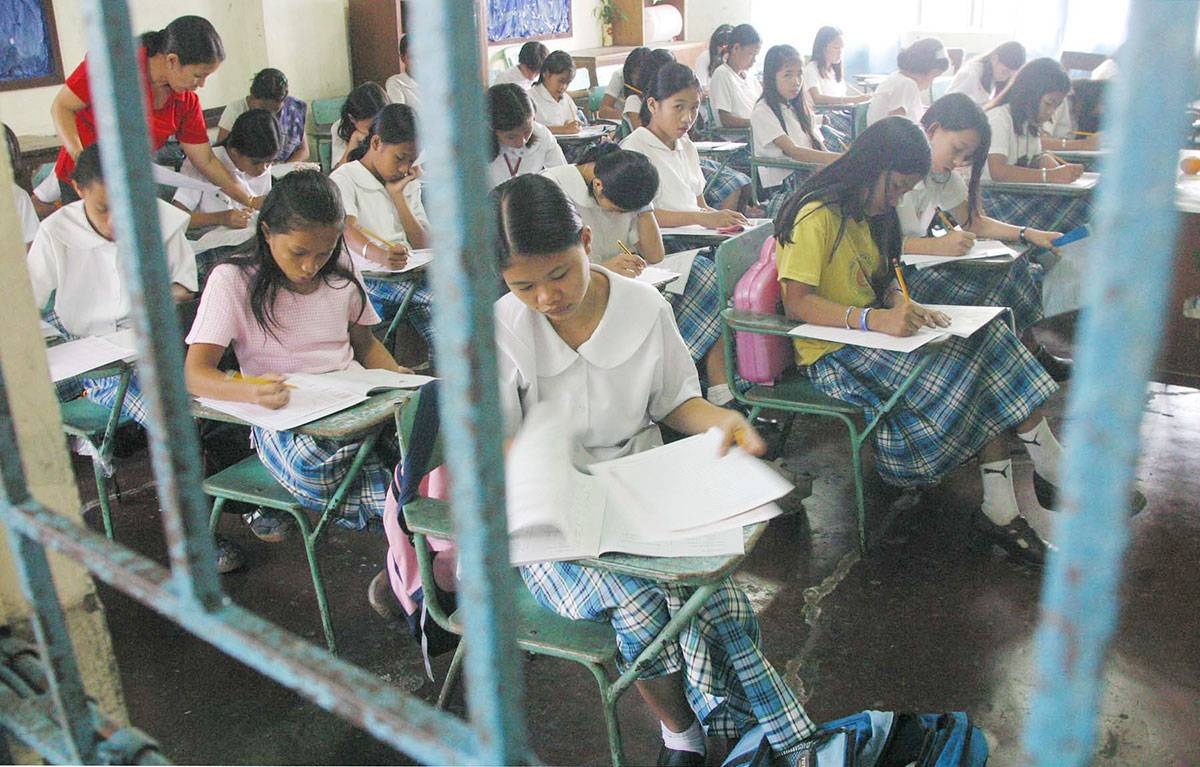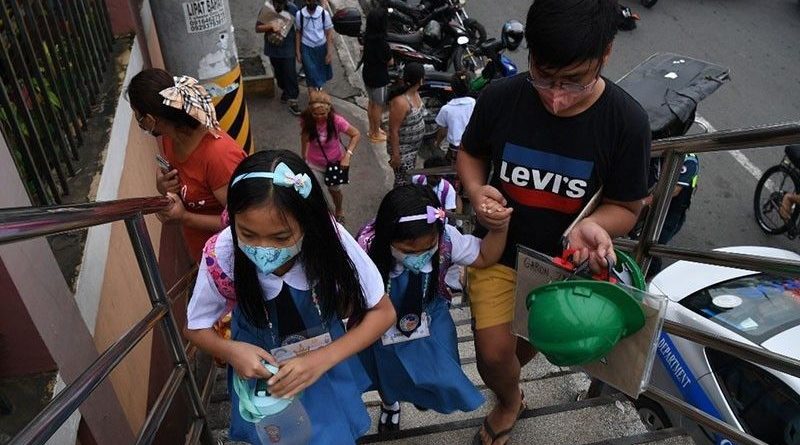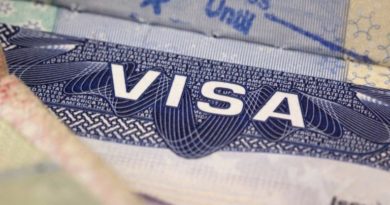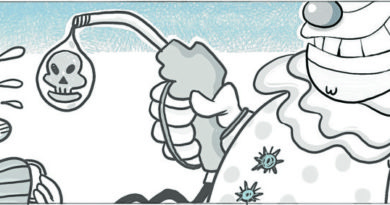HEADLINE-EDU | MANILA- Filipino students lag in learning by 5 years
..
..

THE results of the 2022 Program for International Student Assessment (PISA) showed that Filipino learners lag behind their counterparts in other countries by three to five years, the Department of Education (DepEd) said.
The results showed that 15-year-olds got a mean score of 355 points in mathematics, 347 in reading and 356 in science, lower than their Southeast Asian counterparts and the average score among Organization for Economic Cooperation and Development (OECD) countries.

The average score among OECD countries is 472 points for mathematics, 476 points for reading and 485 points for science.
Based on OECD’s calculations that a 20-point difference in test scores is equivalent to a delay of learning by a year, 15-year-old Filipino learners are delayed by around three to five years, DepEd’s PISA focal point person Alexander Sucalit Jr. said.
The scores reflect that more than 75 percent of 15-year-old students were way below the Level 2 minimum proficiency in math, science and reading based on the United Nations Sustainable Development Goals.
As this year’s PISA focused on mathematics, the 355 score of the Philippines meant that, at a minimum, students could respond to questions that involve easy-to-understand contexts that are clearly given in a simple representation, Education Undersecretary for Curriculum and Teaching Gina Gonong said.
The Philippines’ reading score, meanwhile, showed that, at a minimum, these students could understand the literal meaning of sentences and short passages, while its score in science meant that they could use basic knowledge to identify correct explanations for simple scientific phenomena and with support, can undertake scientific investigations.
The country’s average score for this year was nearly the “same” as the results in 2018, with a slight decline in the science assessment score by one point.
Gonong said that the result produced some “silver lining,” such as students in the National Capital Region and Calabarzon (Cavite, Laguna, Batangas, Rizal and Quezon) Region achieving average scores that were statistically higher than the national average in all three subjects
“In NCR, some 1 percent of our students reached Level 5 in mathematics; it is like a Singapore performance,” she said.
“We are hoping that with the learning recovery programs that we are putting in place, there will be improvements. As to how significant, we have to wait and see, but we are trying our best to do this as aggressively as we can pagdating sa (when it comes to the) learning recovery program,” Education Undersecretary Michael Wesley Poa said.
Vice President Sara Duterte said that the results of the assessment will give DepEd “valuable insights into the strengths and weaknesses of our education system.”
“The PISA results may bear an uncomfortable truth. It has shown that a significant majority of our boys and girls fall below the proficiency level required for full participation in society and contributing to nation-building,” Duterte said.
She added that the results not only reflect on the education system but also the country’s collective efforts, investments and the government’s commitment to education, and the future that they envision for Filipino children.
In an interview with The Manila Times, Coordinating Council for Private Educational Associations of the Philippines chairman Fr. Albert Delvo of the Catholic Educators Association of the Philippines said that the results had been “expected.”
He said that the results present an “opportunity” for government officials and the private sector to look at possible collaborations with the aim of introducing education reform.
“This is a challenge [and also] an opportunity; we have to be more determined and allow the data to speak, use the data properly so that we can address the problems and collaborate with the political will to have an upward trajectory on the performance of students,” Delvo added.
The PISA is an international assessment that serves as a periodic comparative study to gather indicators of student characteristics and proficiencies, along with contextual data to allow interpretation in broader contexts.
The Philippines first participated in the PISA assessment in 2018, during the time of former Education secretary Leonor Briones.
A total of 7,193 students from 188 schools across the country, or 83 percent of the total population of 15-year-old students in the country, took the computer-aided test.
Singapore leads
Asian countries led by Singapore dominated the top spots in a keenly watched survey of education capabilities published on Tuesday, while levels in Europe slipped at a record pace — and not just because of Covid.
However, the report also showed that students in top-performing countries were not necessarily happier.
“The PISA 2022 results show a fall in student performance that is unprecedented in PISA’s history,” OECD education analyst Irene Hu told reporters.
Singapore took the top ranking in the latest assessment, which was carried out in 2022 and involved 690,000 students in 81 participating countries and economies.
The southeast Asian island city-state scored highest in all three of the survey’s areas: mathematics, reading and science.
“These results suggest that, on average, Singaporean students are the equivalent of almost three to five years of schooling ahead of their peers,” the report said.
Five other Asian education systems — in Macau, Taiwan, Hong Kong, Japan and South Korea — came next in mathematics and also scored near the top in reading and science.
But while Asia did well, other parts of the world declined, sparking an overall “unprecedented drop in performance,” the report said.
Germany, Iceland, the Netherlands, Norway and Poland, for example, all saw notably lower achievements in mathematics, it said.
‘Not just about Covid’
Covid-19 shutdowns hurt education standards, the report said, but there were also other factors behind the downturn.
Students in Finland, Iceland and Sweden — once star performers — have been scoring lower marks for years.
“This indicates that long-term issues in education systems are also to blame for the drop in performance,” it said.
“It is not just about Covid.” A key factor is “the level of support pupils received from teachers and school staff,” the OECD’s Hu said.
Some education systems have not given sufficient resources for supporting students, said Eric Charbonnier, another OECD education analyst.
“Countries have invested in education over the past 10 years, but maybe they didn’t invest efficiently or sufficiently into the quality of teaching,” he said.
“We also see less parental involvement with the progress of children compared to 2018,” he added.
In some cases, 2022’s drop in skills amounted to roughly a year’s worth of education.
“For example, in mathematics, in Denmark, France, Greece, Portugal and Sweden, the average 15-year-old in 2022 scored at the level expected of a 14-year-old in 2018,” the report said.
WITH AFP


 Memento Maxima Digital Marketing
Memento Maxima Digital Marketing







